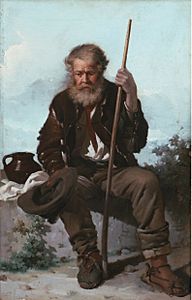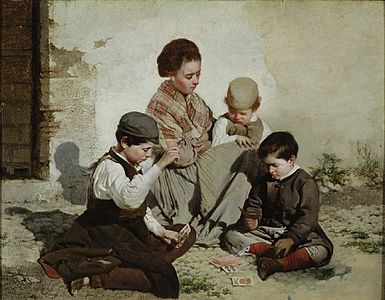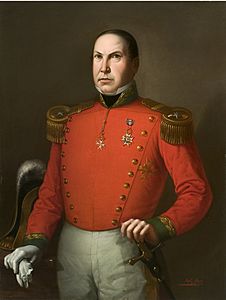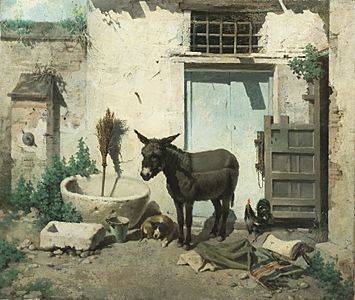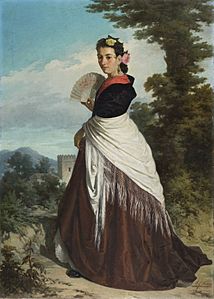Rafael Romero Barros facts for kids
Quick facts for kids
Rafael Romero Barros
|
|
|---|---|
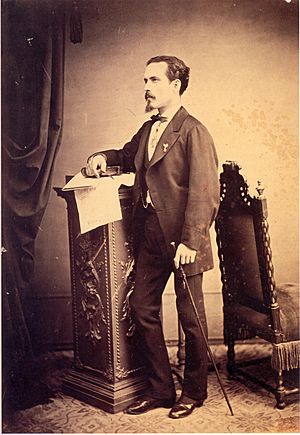
Rafael Romero (c.1865)
|
|
| Born | 30 May 1832 Moguer, Spain
|
| Died | 2 December 1895 |
| Nationality | Spanish |
| Education | Seville |
| Known for | Art restorer, writer |
| Movement | Orientalist; Costumbrista |
Rafael Romero Barros (born May 30, 1832, in Moguer, Spain – died December 2, 1895, in Córdoba) was a Spanish painter. He was known for his art style called Costumbrismo, which focused on everyday life and customs. His youngest son, Julio Romero de Torres, also became a famous painter.
Contents
Biography
Early Life and Education
Rafael Romero Barros was born into a family that didn't have much money. When he was just a baby, his parents moved to Seville to find work.
At age twelve, he started studying at the "Universidad Literaria de Sevilla." Here, he showed a talent for writing about art and literature. It was also in Seville that he began his first art lessons. He soon decided he wanted to be an artist. Early on, he was inspired by the famous painter Raphael and English landscape artists.
Moving to Córdoba and New Roles
In 1862, Rafael moved to Córdoba. He took on an important job managing the "Museo Provincial de Pintura" (Provincial Painting Museum). Over the next few years, he helped create new schools. He founded the "Escuela de Música" (School of Music) and the "Escuela Provincial de Bellas Artes" (Provincial School of Fine Arts).
He also organized and led the "Museo Arqueológico y Etnológico de Córdoba" (Archaeological and Ethnological Museum of Córdoba). Rafael was a busy writer, often contributing many articles to local newspapers and magazines. Besides his work in culture, he was a lifelong member of the "Asociación de Obreros Cordobeses," which was a labor union (a group that helps workers). He even served as its secretary.
Art Restoration and Preservation
One of Rafael's most important jobs was as an art restorer. This means he carefully repaired old and damaged paintings. In his museum workshop, he restored artworks by famous painters like Juan de Valdés Leal and Antonio del Castillo y Saavedra. He even restored a very old image from the 13th century called the "Virgen de Linares."
Because he was also interested in archaeology (the study of human history through digging up old things), he worked to preserve old artworks. He was especially worried about art from Arab and Jewish cultures, which were sometimes ignored or damaged. So, he teamed up with Father Fidel Fita, a well-known history expert. Father Fita helped him understand and copy old writings. Because of all his hard work, Rafael was given a position on the "Comisión de Monumentos de Córdoba" (Commission of Monuments of Córdoba). This group worked to protect historical buildings and artworks.
Selected Paintings
Rafael Romero Barros's paintings, especially his later ones, are known as Costumbrista art. This style often shows scenes from everyday life and local customs. However, his works sometimes didn't have the typical story-like feel of other Costumbrista paintings. Many of his artworks show the influence of another famous painter, Bartolomé Esteban Murillo.
Rafael had two other sons who also became painters: Rafael and Enrique.
See also



